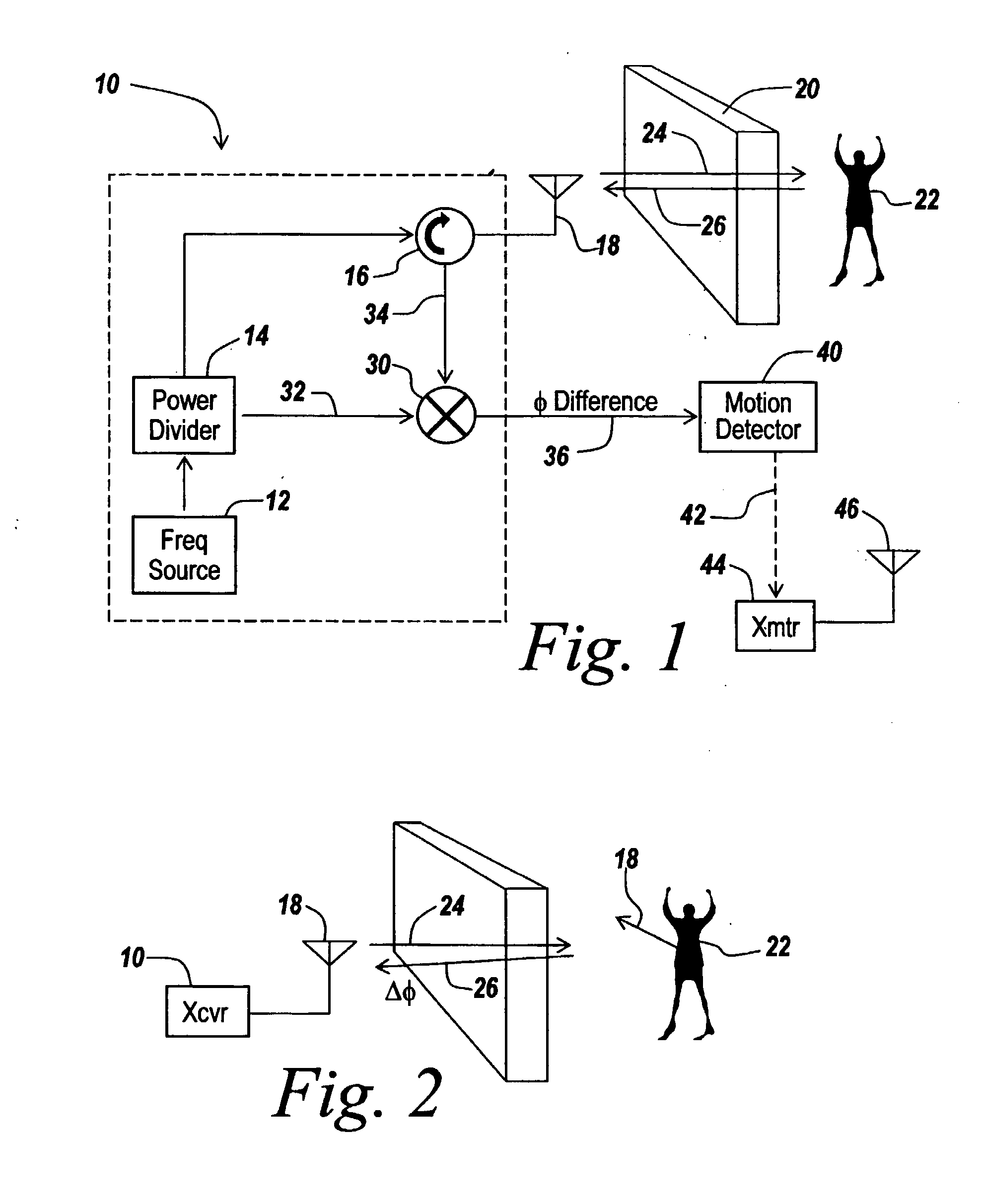Method and apparatus for through-the-wall motion detection utilizing cw radar
a technology of cw radar and motion detection, applied in the field of through-the-wall sensors, can solve the problems of affecting the detection effect of people, requiring fairly expensive hardware, and having to generate short pulses, etc., and achieve the effect of easy detection of peopl
- Summary
- Abstract
- Description
- Claims
- Application Information
AI Technical Summary
Benefits of technology
Problems solved by technology
Method used
Image
Examples
Embodiment Construction
[0023] Referring now to FIG. 1, a CW radar 10 includes a frequency source 12, a power divider 14 and a circulator 16 coupled to an antenna 18. Preferably, the antenna is a directional antenna so as to project all of the energy in a given direction, in this case through a wall 20, so as to be able to ascertain whether an individual 22 exists behind the wall.
[0024] In one embodiment, the radar is a single frequency radar set optimally in one embodiment to 900 MHz, with antenna 18 in one embodiment being a YAGI antenna, with 13 dB forward gain. While a YAGI antenna may be utilized in order to reduce back lobes and yet have a readily portable unit, a flat panel antenna with conductive elements insulated from a ground plane may be used to eliminate back lobes and is lighter and more easily transportable.
[0025] As illustrated, one output of power divider 14 is coupled to circulator 16 coupled to a directional antenna 18 that forms a CW beam as illustrated at 24 which penetrates wall 20....
PUM
 Login to View More
Login to View More Abstract
Description
Claims
Application Information
 Login to View More
Login to View More - R&D
- Intellectual Property
- Life Sciences
- Materials
- Tech Scout
- Unparalleled Data Quality
- Higher Quality Content
- 60% Fewer Hallucinations
Browse by: Latest US Patents, China's latest patents, Technical Efficacy Thesaurus, Application Domain, Technology Topic, Popular Technical Reports.
© 2025 PatSnap. All rights reserved.Legal|Privacy policy|Modern Slavery Act Transparency Statement|Sitemap|About US| Contact US: help@patsnap.com



